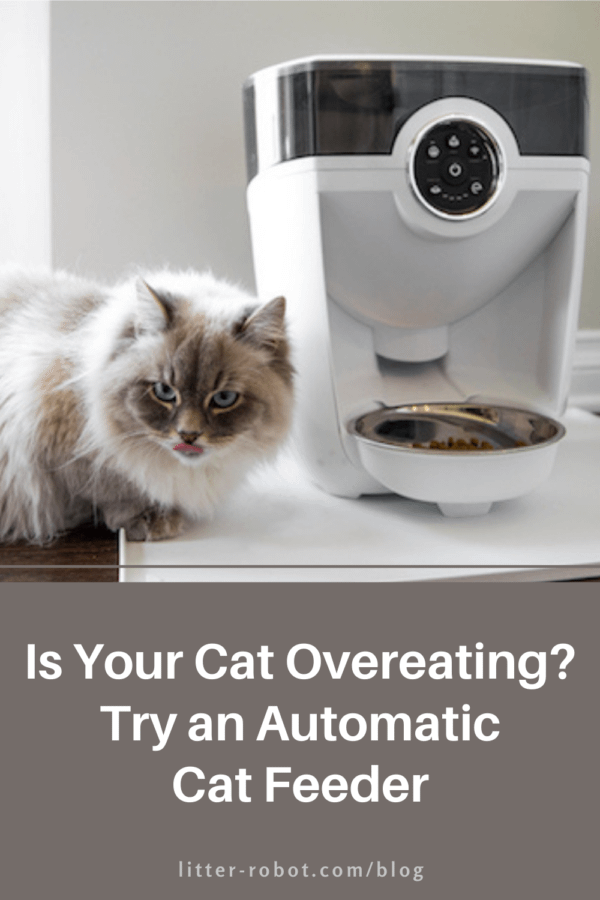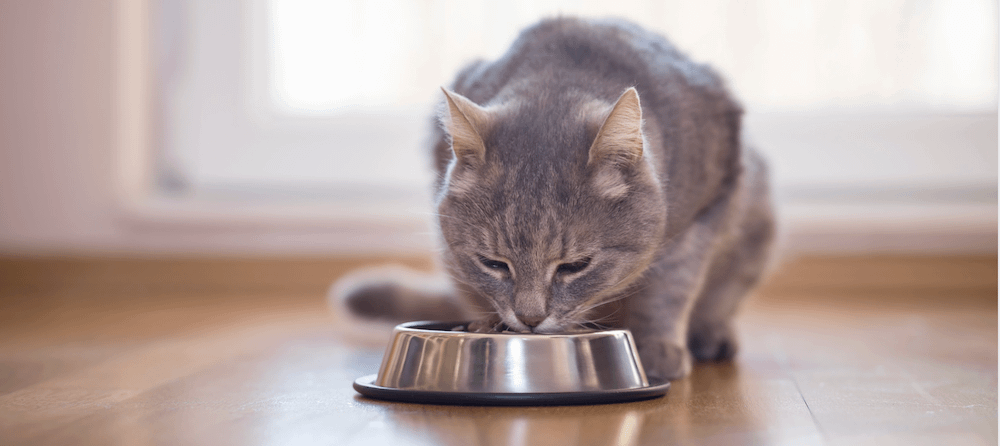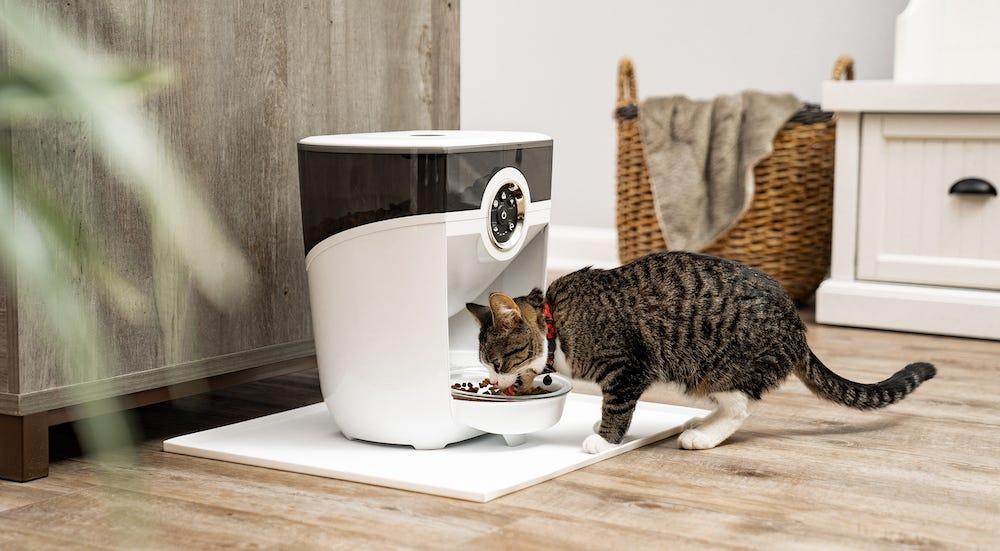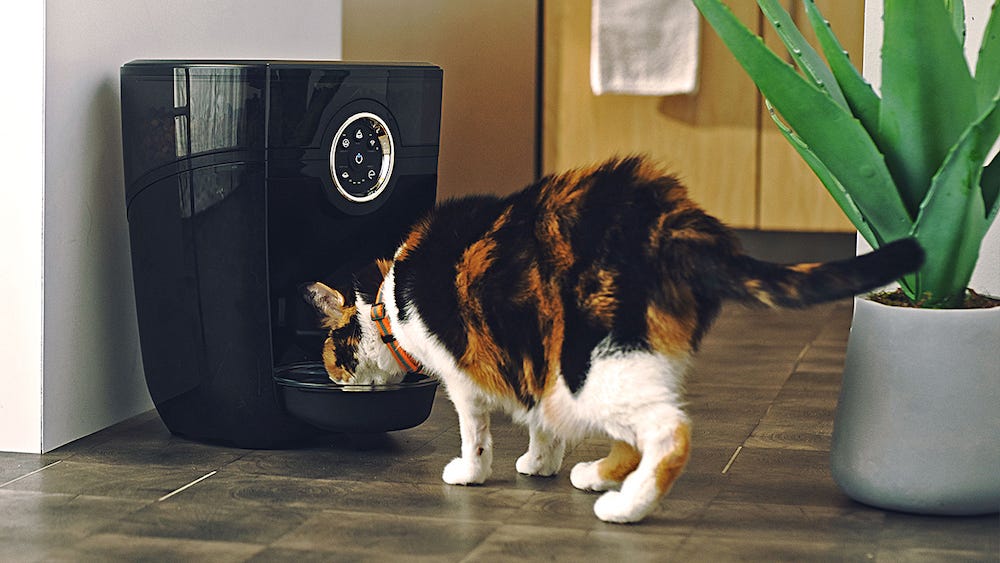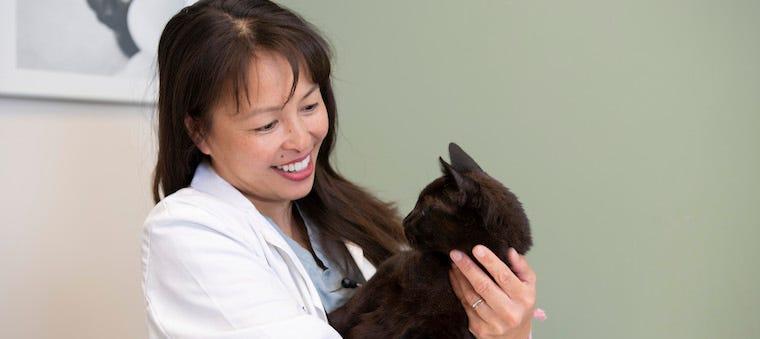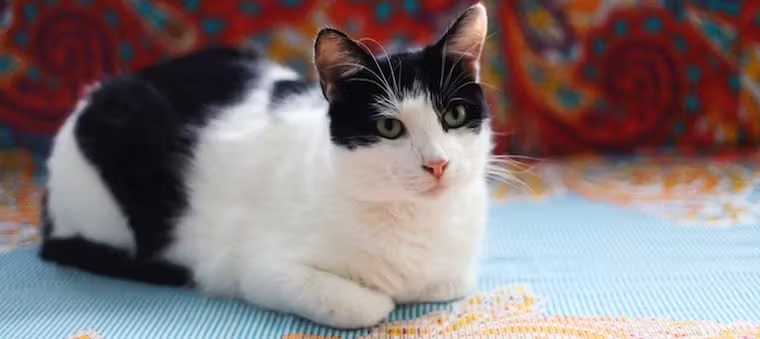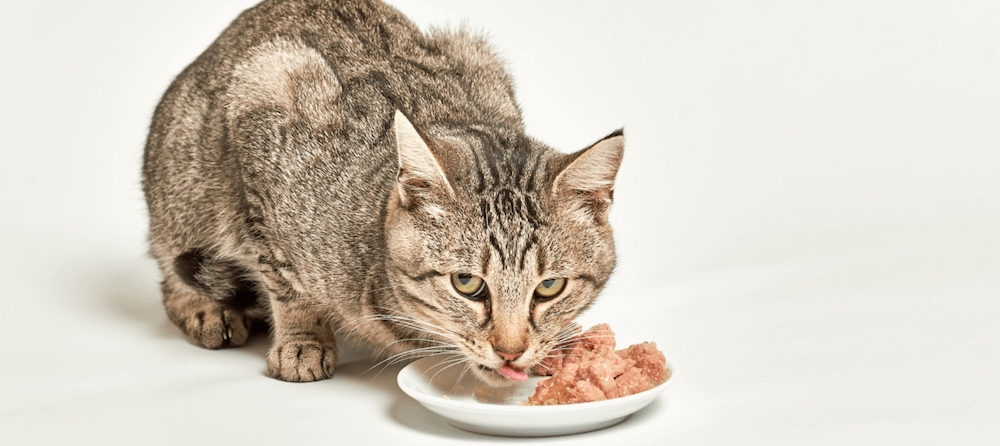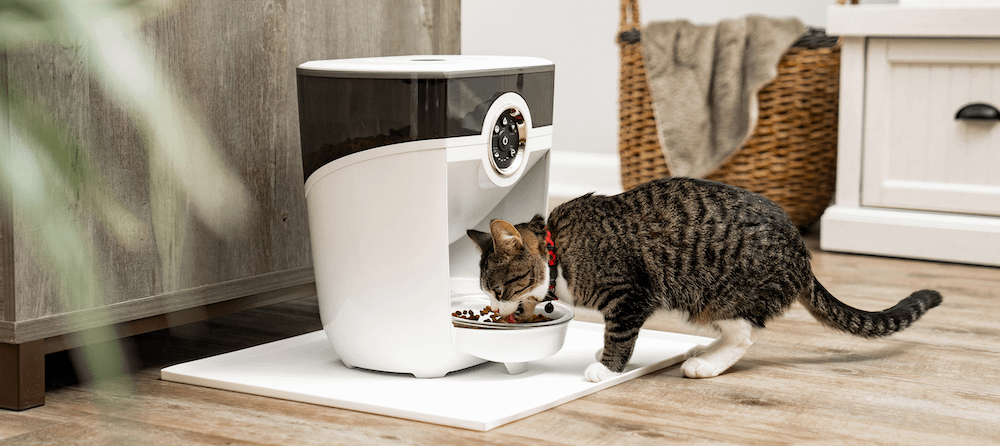Sometimes pets share our bad habits, including snacking a little too often. Is your cat overeating? Find out how much your cat should be eating, along with tips to combat their feeding frenzy. For instance, one of the best ways to make sure your feline doesn’t overeat is with an automatic cat feeder.
How much should I feed my cat?
According to vets, adult cats generally require 20 kcals per pound of cat. This means your healthy, 10-pound adult cat should eat 200 calories a day. The recommended amount of calories can vary based on your cat’s age, lifestyle, and health conditions. So if you’re wanting to feed your feline friend based on calories, it’s best to consult with your veterinarian to determine what amount is most appropriate for your cat.
Unfortunately, the pet food industry is not required to list how many calories are in a can or a cup of cat food—which can make feeding time a frustrating guessing game for pet parents. Most bags or cans of cat food have a recommended amount that should be fed for your cat’s weight. Unless told otherwise by your veterinarian, this is usually a good place to start in determining how much your cat should be fed. Underweight and overweight cats should be fed for the weight we want them to be, with some veterinary oversight of course.
Many vets recommend that you feed your adult cat 1/4 cup of dry food twice a day, and approximately 1/4-1/2 can of canned food (grueled with more water) as a snack.
Can kittens eat adult cat food?
The general recommendation is that kittens should stay on kitten-specific food (not an all-life stages diet) until 10 to 12 months old. If your kitten is 6 to 8 months old and already quite plump, you may consider transitioning to adult cat food. Adult cat food typically has fewer calories and is perfectly safe for older kittens. Check with your vet before switching your kitten’s diet entirely to adult cat food.
Is my cat eating too much? How to tell
Your cat is, well, chonky
Unfortunately, 60-70% of cats in the United States are considered overweight to obese. It can be hard to pin down a healthy cat weight, but many veterinarians follow the Body Condition Score (BCS). See for yourself what a cat with an ideal body weight looks like, versus a cat that is overweight:
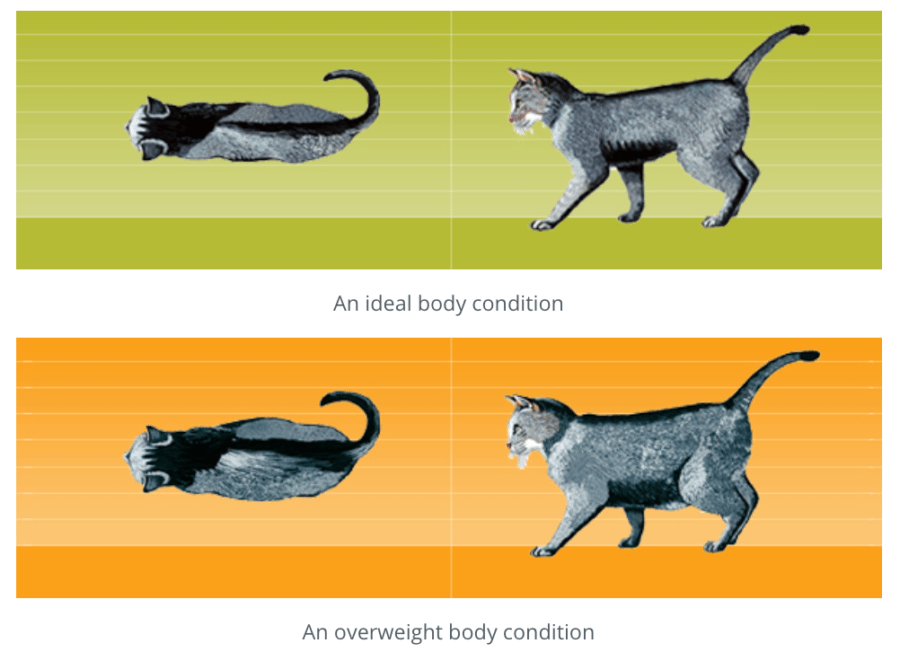
If you can’t easily feel your cat’s ribs, view a clear waistline from above, or see a visible tummy tuck from the side, your cat may be overweight or obese.
Your cat throws up after eating
If your cat vomits after meals, there could be several reasons related to overeating.
One, your cat gorges. This is more likely if you practice free feeding, or leaving large amounts of dry food in a bowl or feeder available for 24/7 access. If your cat doesn’t learn to pace himself from an early age, there is a chance that he will gorge on excessive amounts of dry food. This can lead to vomiting and, eventually, obesity.
Two, your cat eats too quickly. If you practice meal feeding, or offering food several times a day in the canned and/or wet form, your cat may be guilty of the “scarf and barf” technique. This type of eating may not necessarily lead to obesity, but it does create discomfort for your cat and a mess for you.
Why is my cat always hungry?
Have you ever wondered, “why does my cat eat so much?” You’re not alone. However, if your cat is suddenly hungrier than usual, or generally seems ravenous and begs for food, you may want to make an appointment with your veterinarian to rule out any medical conditions.
Medical conditions related to overeating
Hyperthyroidism
An increase in appetite could indicate hyperthyroidism. If your cat eats ravenously despite weight loss, then they could be experiencing hyperthyroidism. When the thyroid gland produces too much thyroid hormone, it results in an overstimulated, hyperactive metabolism. You may see your cat drinking more than usual, as well. If you notice these symptoms, make an appointment with your vet as soon as possible.
Left untreated, hyperthyroidism can lead to high blood pressure, congestive heart failure, blindness, seizures, or even sudden death.
Pregnancy
If your female cat isn’t spayed and you notice that her appetite has increased, there’s a chance she could be pregnant. Pay attention to other signs of pregnancy in cats, including weight gain, swollen abdomen, and changes in nipple appearance.
Do cats stress eat or eat when bored?
Like humans, cats may respond to stress or boredom by eating when they are not necessarily hungry. If your cat recently experienced a stressful situation or a change in their environment—for example, a visit to the vet, a move, a new human sibling or pet sibling, etc.—and are eating more often, this could be a sign of stress eating.
Try these tips to calm an anxious cat and devote at least 15 minutes of playtime per day to your cat. To combat boredom while you’re away, provide a stimulating environment with lots of toys and cat furniture, such as shelves, trees, and window perches.
Try an automatic cat feeder
So, is your cat overeating? Whether he has been gorging on dry food or you’ve accidentally been overfeeding him, it’s time to get back on track.
One of the easiest ways to ensure your cat receives a healthy amount of food on time, every time is with an automatic cat feeder!
Feeder-Robot
From Whisker, the maker of Litter-Robot, comes the WiFi-enabled, automatic cat feeder, Feeder-Robot. Feeder-Robot is an automatic cat feeder and dog feeder that allows you to monitor and control your pet’s feeding habits from your phone. You can set your preferred number of portion-controlled meals per day to help your pet stay healthy. Plus, it’s the first automatic cat feeder that allows you to set a feeding schedule from either the unit control panel or on the app (or both!).
Remember how we said that you should feed your adult cat 1/4 cup of dry food twice a day? Feeder-Robot conveniently dispenses dry food in 1/8 cup increments (up to 1/2 cup total per meal).
Finally, if you’re confident that your cat won’t gorge himself from free feeding, you can enable Gravity Mode on Feeder-Robot. Gravity Mode ensures that the food bowl stays full based on a check every 6 hours.
How reliable is an automatic cat feeder?
You may be nervous about relying on an appliance to feed your furry family members. With Feeder-Robot, enjoy peace of mind knowing your pet will be fed the right amount on time, every time—even if the unit goes offline. And if food is not dispensed for any reason, you will be notified by the unit and the app.
How does it work? The sophisticated hardware in the timed pet feeder detects food backup and features anti-jam technology to prevent missed meals. Even if the unit goes offline, your pet's feeding schedule is saved and will continue to dispense. Finally, the optional backup battery also provides 24 hours of use in power-saving mode.
Whether you’re dealing with a cat overeating or looking to simplify mealtime in your pet household, an automatic cat feeder is the way to go. Order your Feeder-Robot today!
Sources:
